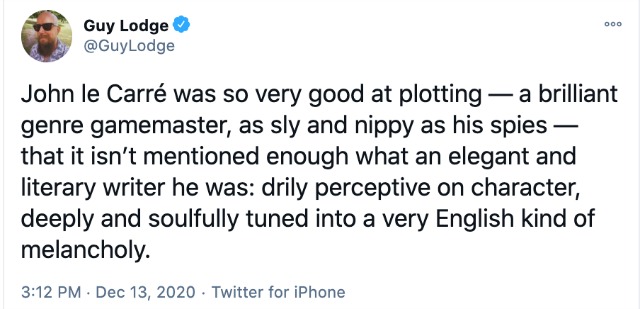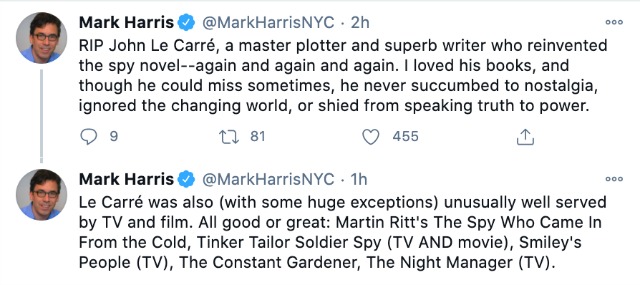It may sound vaguely disrespectful or even dismissive to state that the career of John le Carre, the spy-novel maestro whose given name was David Cornwell, peaked with the publishing of his third novel, “The Spy Who Came In From The Cold.”
Le Carre was a brilliant spinner of complex, morally ambivalent intelligence tales — an amazingly shrewd and skillful novelist, and a brilliant story strategist. But no Le Carre book had a greater impact than “TSWCIFTC”.
And from this came the excellent movie adaptation from director Martin Ritt and star Richard Burton as Alec Leamas, a British agent who pretends to defect in order to bring about the murder of a malevolent East German agent. Le Carre’s fake-out ending is the greatest in the history of espionage thrillers, bar none.
Cornwell re-peaked in the ’70s with a pair of masterful George Smiley novels — “Tinker Tailor Spoiler Spy” (’74) and especially “Smiley’s People” (’79).
I’ve always felt slightly under-served by the ending of “Smiley’s People”, in which Moscow Center honcho Karla is forced to defect and surrender to British intelligence in Berlin.
It wasn’t the finale itself that bothered me (far from it) but the fact that Le Carre didn’t provide an extra chapter or two about what happened after Karla crossed over. I needed to decompress and contemplate the whole history and ramifications. I needed to know what Karla told the British “Circus” boys, where he wound up living, how his schizophrenic daughter fared, and so on.
Cornwell also penned the highly respected “The Looking Glass War” (’65), “The Little Drummer Girl” (’83), “The Night Manager” (’93), “The Tailor of Panama” (’96), “The Constant Gardener” (’01), “A Most Wanted Man” (’08) and “Our Kind of Traitor” (’10)











